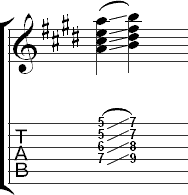How Slides Are Notated in Guitar Tablature
There are numerous kinds of slides. Some slides are from random notes above or below a pitch and others are between specific pitches.
Slides Between Specific Pitches
A slanted line is used to indicate a slide between two notes. The line will slant up or down depending on whether you are sliding up or down to a note. If there is a curved line over the notes, strike the first note and slide up to the second note without striking it:
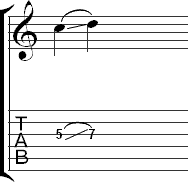
Two notes with only a slanted line and no curved line above them indicates to strike the first note then slide up to the second note, striking it as the finger reaches the specified fret:
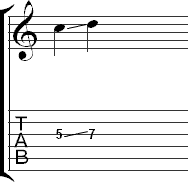
Slides from Unspecified Pitches
Slides can also go from an unspecified pitch up or down to a specified pitch. A line slanting up toward a note means to slide up to that pitch from a random pitch below the pitch:
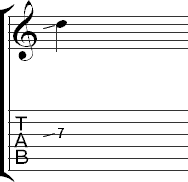
A line slanting down to the note means to slide down to that pitch from a random pitch above the pitch:
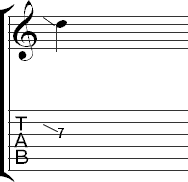
Slides to Unspecified Pitches
A slide to a random pitch is also possible after a note is played. A line after a note that slants downward means to play the note then slide down to a random pitch before releasing the string:
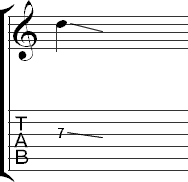
A line after a note that slants upward indicates to play the note and then slide upward to a random pitch before releasing the string:
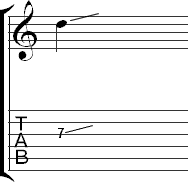
Sliding Multiple Notes at Once
It is possible to slide notes on more than one string at the same time. Any of the slide techniques described above can be used when doing multi-string slides. Below is an example of a legato slide where only the first chord is struck:
